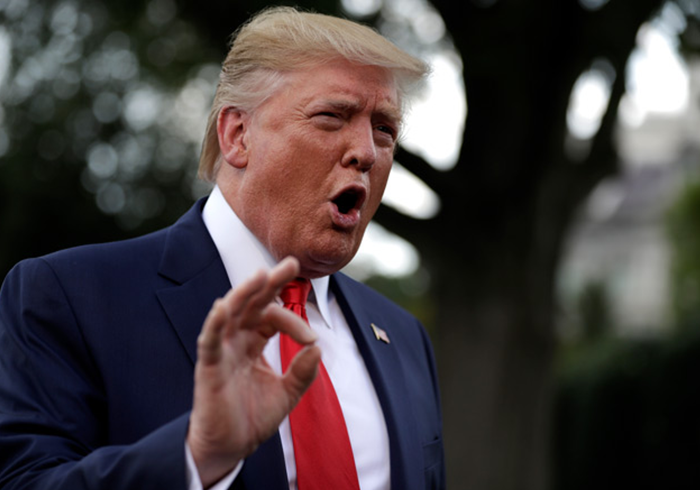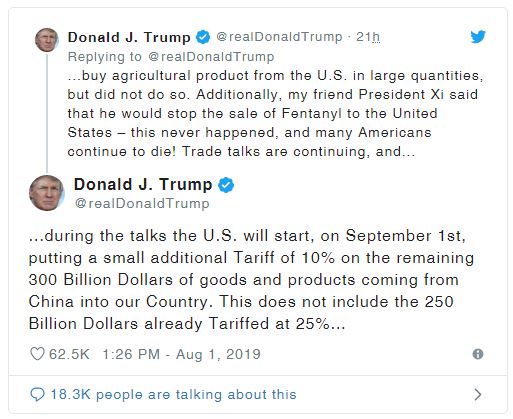President Trump has announced that an additional 10 percent tariff will be imposed to all remaining imports coming from China on Sept. 1 which represents approximately $300 billion worth of goods that are not already subject to Section 301 tariffs (List 4).
The Chinese government failing to honor promises to buy more agricultural products from the US, and stop the sale of Chinese-made Fentanyl opioid to the US were the triggering events that made President Trump take such action although trade talks between Washington and Beijing continue.
“Trade talks are continuing, and during the talks the U.S. will start, on September 1st, putting a small additional Tariff of 10% on the remaining 300 Billion Dollars of goods and products coming from China into our Country…We look forward to continuing our positive dialogue with China on a comprehensive Trade Deal, and feel that the future between our two countries will be a very bright one!” Trump said in a tweet on Thursday.
The 10 percent tariff will be added to any other applicable tariffs, and it will be applied to the entire list of 3,805 full and partial subheadings announced in May, including apparel, footwear, manufactured textile products, among others, only excluding pharmaceuticals, pharmaceutical inputs, and certain medical goods.
Exclusions for products from the List 4 are not expected to be accepted while the tariff rate remains at 10 percent, however, if the rate is increased to 25 percent, an exclusion process could be established.





